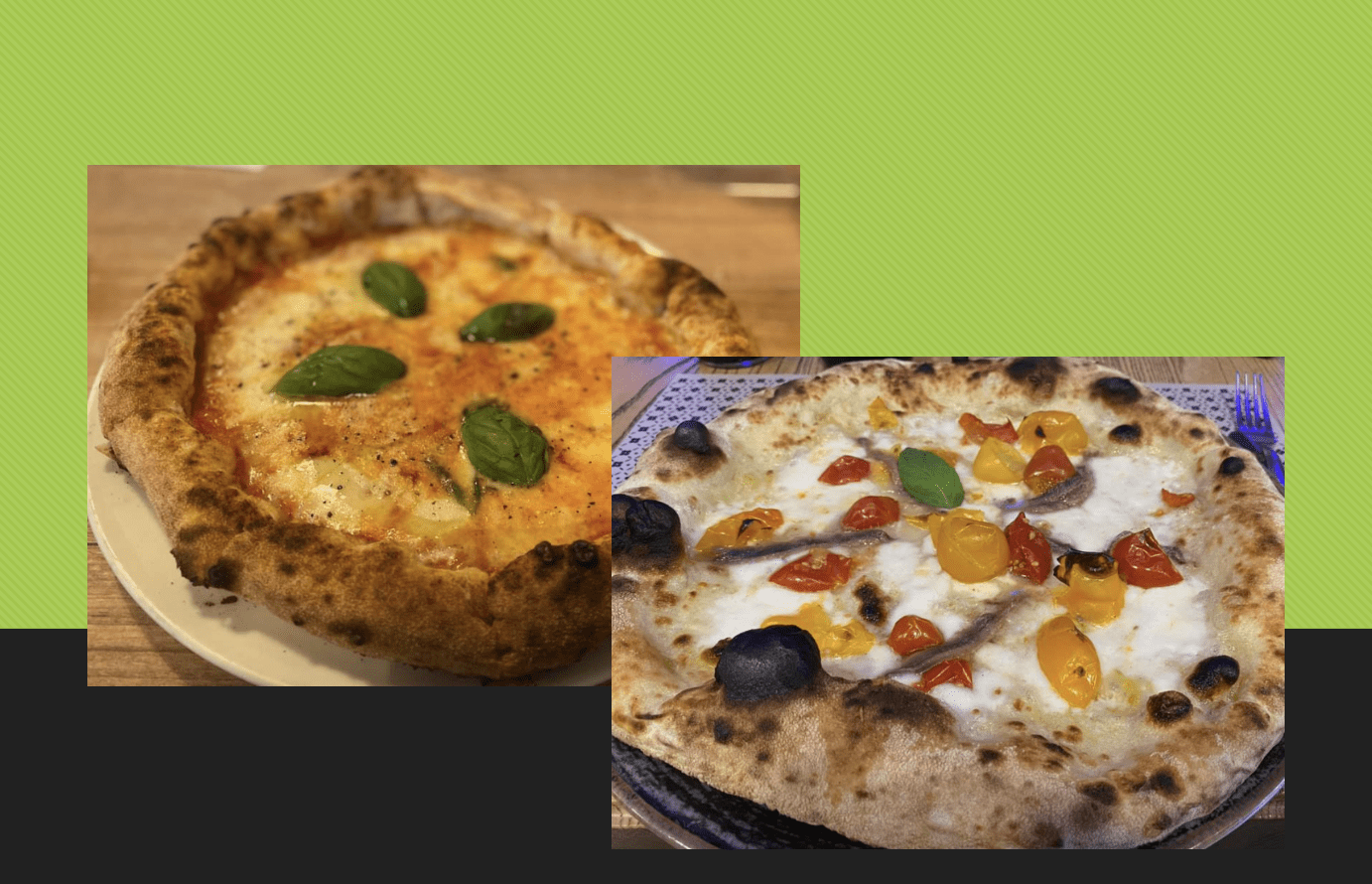Search Posts
Recent Posts
- Our Networking Pick of the Week: North Kingstown Chamber at Tilted Barn June 16, 2025
- Business Beat: Residential Properties, Ltd (RPL) sales excellence celebrated at annual Top Producers Event June 16, 2025
- House Finance Committee’s FY 26 Budget boosts support for older Rhode Islanders – Herb Weiss June 16, 2025
- Business Monday: Employers need to learn how to “bust” ghostworking – Mary T. O’Sullivan June 16, 2025
- Rhode Island Weather for June 16, 2025 – Jack Donnelly June 16, 2025
Categories
Subscribe!
Thanks for subscribing! Please check your email for further instructions.

Ask Chef Walter: Pizza, increasingly popular! – Chef Walter Potenza
by Walter Potenza, Executive Chef, contributing writer
Friends:
Pizza has transformed remarkably from a humble Italian dish to a culinary favorite worldwide. Its broad appeal knows no bounds, resonating with individuals of all ages and spanning diverse cultural backgrounds.
Americans eat approximately 100 acres of pizza daily, or 350 slices per second. There are approximately 67,269 pizzerias in the United States, and approximately 3 billion pizzas are sold in the U.S. each year. Kids between the ages of 3 and 11 prefer pizza over all other food groups for lunch and dinner. Pepperoni is America’s topping, followed by extra cheese, sausage, mushrooms, green pepper, and onion. Anchovies always run last.
So, let’s delve into the myriad factors that have contributed to the widespread adoration of this versatile dish.
We do know that flatbreads were already a dietary staple in ancient civilizations, even before Etruscan times. However, the pizza we recognize today began to take form in Naples, Italy, during the 18th and 19th centuries. The classic Margherita pizza, featuring a simple yet compelling blend of tomatoes, mozzarella, and basil, was conceived as an homage to Queen Margherita of Savoy. Rapidly ingrained in Italian cuisine for its affordability and delectable flavors, the cultural significance of this classic dish endures in every slice enjoyed today.
Pizza’s journey to international prominence was catalyzed by Italian immigrants who transported their culinary traditions and techniques to the United States in the late 19th and early 20th centuries. Pizzerias emerged in cities such as New York and Chicago, where pizza evolved to align with local preferences. Notable adaptations include the New York-style pizza, prized for its large, foldable slices and thin crust, and the Chicago-style deep-dish pizza, renowned for its thick, pie-like structure.
An enthralling facet of pizza’s universal appeal lies in its remarkable adaptability. While traditional Italian pizza remains a cherished choice, each culture has infused distinctive variations. In Japan, pizzas may feature toppings like squid and mayonnaise, while in India, one can relish pizzas topped with paneer and tandoori chicken. This cultural adaptability enriches pizza’s appeal and transforms it into a global culinary odyssey.
In addition, the ascent of the fast-food industry played a pivotal role in surging pizza’s popularity. Chains such as Domino’s, Pizza Hut, and Papa John’s capitalized on the demand for practical, effortless meals by offering delivery and takeout options. Their extensive marketing endeavors and unwavering commitment to quality made pizza a go-to choice for busy households, college students, and anyone searching for a quick and gratifying meal.
With its unique social allure, pizza has become synonymous with communal dining experiences, gatherings, and celebrations. Pizza often serves as the centerpiece, whether an informal rendezvous with friends, a birthday celebration, or a family movie night. Its communal, shareable nature fosters a sense of togetherness and infuses each bite with warmth and comfort.
Another contributing factor to pizza’s enduring popularity is its boundless variety and customization options. An extensive array of pizzas catering to varied tastes, from traditional combinations such as pepperoni and cheese to high-end toppings like arugula and truffle oil, ensures a pizza suits every palate. The capacity to tailor pizzas to accommodate dietary preferences and individual or religious restrictions, such as gluten-free or vegan options, adds a refreshing essence of culinary exploration to each pizza order.
“Recognized as the quintessential comfort food, pizza exudes an irresistible allure with its warm, cheesy goodness and gratifying crust.”It possesses a unique ability to evoke feelings of nostalgia and contentment. During times of stress and celebration, many individuals seek solace and indulgence in pizza, transforming it into a dish and a source of emotional warmth and satisfaction.
Lastly, the digital era has significantly amplified pizza’s appeal. Online ordering platforms and mobile applications have rendered it remarkably convenient to customize and order pizzas for delivery or pickup. Social media channels also play a pivotal role, with tantalizing pizza photos and videos frequently gaining virality, sparking cravings, and rendering pizza even more accessible.

The final thoughts!
The popularity of pizza shows no indications of waning. Its rich historical heritage, cultural adaptability, convenience, communal appeal, diversity, comfort factor, and digital influence collectively solidify its status as a beloved global dish. Whether relished in a traditional pizzeria, ordered digitally, or prepared at home, pizza is a unifying force, gratifying global cravings. As culinary trends continue to evolve, one certainty remains: pizza will always maintain a special place in our hearts and on our plates.
PIZZA TESTED RECIPE
Let’s work in the kitchen on pizza dough using the Biga process.
The biga process is a type of pre-fermentation used in Italian baking, particularly for pizza and bread. It helps to develop flavor and improve the texture of the dough.
Ingredients
For the Biga:
150 grams (1 cup) bread flour
100 grams (1/2 cup) water (room temperature)
1 gram (1/4 teaspoon) active dry yeast
For the Dough:
All of the biga
350 grams (2 1/3 cups) bread flour
200 grams (3/4 cup plus one tablespoon) water (room temperature)
10 grams (2 teaspoons) salt
2 grams (1/2 teaspoon) active dry yeast
20 grams (1 1/2 tablespoons) olive oil
Preparation:
Step 1: Make the Biga
1. Mix the bread flour, water, and yeast for the biga in a bowl. Mix until all the flour is hydrated and you have a shaggy dough.
2. Cover the bowl with a kitchen towel or plastic wrap and let it ferment at room temperature for 12-16 hours. When it’s ready, the biga should be bubbly and slightly domed.
Step 2: Make the Dough
1. Combine the remaining bread flour, water, salt, and yeast in a large mixing bowl.
2. Add the biga to the mixture.
3. Mix the ingredients until a dough forms. You can use a stand mixer with a dough hook attachment on low speed for about 4-5 minutes or mix by hand until the dough comes together.
4. Add the olive oil and continue kneading the dough for 5-6 minutes until it becomes smooth and elastic.
Step 3: First Rise
1. Shape the dough into a ball and place it in a lightly oiled bowl, turning it to coat with oil.
2. Cover the bowl with plastic wrap or a kitchen towel and let it rise at room temperature for about 1.5-2 hours or until it has doubled.
Step 4: Shaping the Dough
1. Turn the dough onto a lightly floured surface once the dough has risen.
2. Divide the dough into 2-3 equal portions, depending on the size of the pizzas you want to make.
3. Shape each portion into a tight ball by folding the edges into the center and pinching them together. Cover and let the dough balls rest for 15-20 minutes to relax the gluten.
Step 5: Final Rise
1. flatten each dough ball into a disk using your hands or a rolling pin after resting.
2. Place the disks on a lightly floured surface, cover them with a kitchen towel, and let them rise for 30-45 minutes.
Step 6: Shaping and Baking
1. Preheat your oven to its highest temperature (around 500°F or 260°C). If you have a pizza stone, place it in the oven to heat up.
2. Stretch or roll each dough ball into your desired pizza shape and thickness.
3. Transfer the shaped dough to a pizza peel or a baking sheet lined with parchment paper.
4. Add your favorite toppings.
5. Bake in the oven for 10-15 minutes or until the crust is golden and the cheese is bubbly and melted.
Enjoy your delicious homemade pizza with the depth of flavor from the extensive process!
Photo Attribution via Chef Walters Cooking School
www.chefwalterscookingschool.com

